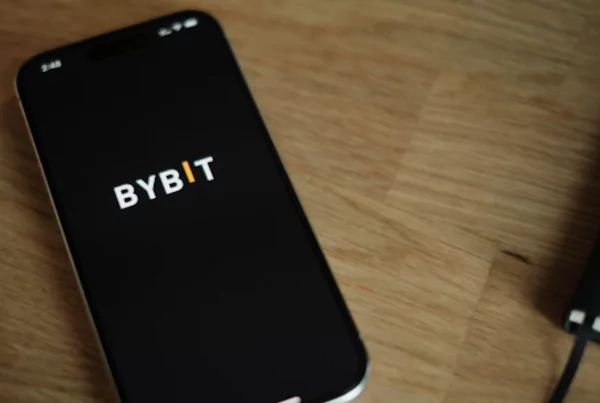
It’s no news that the crypto market suffered a dreadful downfall in 2022 when bankruptcies and scandals became the order of the day and crypto prices fell across the board. Fortunately, 2023 started on a more positive note for the crypto industry, with most coins recovering a considerable part of the value they’ve lost during the latest crypto winter, and Bitcoin was among the big winners. The king of crypto gained almost 75% and nearly doubled its price in the first half of the year, recording the best annual performance since 2020.
As impressive as this comeback may be, Bitcoin appears unable to take things to the next level. Despite its price appreciation, the flagship crypto has been hot and cold for the past few months. Every time it broke above $30,000, a price correction followed and pulled it back under the threshold. On July 13th, Bitcoin managed to go a step further and hit a yearly record of $31,800. However, the price spike was as short-lived as all others and Bitcoin soon dipped below $30,000.
A similar scenario repeated this past week when Bitcoin briefly hit $30,100. This time, things happened on fast-forward and before the news could reach all corners of the globe, Bitcoin went back to $29K, a level we’ve already become accustomed to. At the time of writing, Bitcoin was trading at $29,360.
Why is Bitcoin not capable of holding above $30K?
There’s no denying that Bitcoin is doing much better than it has for a very long time. The figures clearly show the significant growth it has experienced over recent months. However, when it comes to Bitcoin, people expect a lot more than a mild improvement. We’re talking about a coin that was trading for almost $69,000 back in December 2021, when it was at its highest. Compared to its previous values, $30K doesn’t seem like such an impossible level to surpass. The original crypto has proved time and time again that it can do so much better than that.
So, why is Bitcoin still hovering around the $29K mark and every price rally that pushes it beyond $30K is cut short? There are a few potential explanations for this back-and-forth movement Bitcoin has been doing lately.
First, we have to point out that even if the price spikes have been fleeting, the same thing can be said about the drops. We’ve seen Bitcoin fall under $29,000 more than a few times over the past weeks, but none of these dips lasted for long as the coin managed to get back on track quickly.
SEC’s decision on Bitcoin ETFs applications
Getting back to Bitcoin’s stagnation at $29K, one reason for the lack of bullish momentum might be the uncertainty that still surrounds the future of Bitcoin exchange-traded funds (ETFs). There’s been a lot of talk lately about ETFs and how they might influence the future of the crypto market as several high-profile financial institutions like BlackRock, Bitwise, and Van Eck have filed applications for Spot Bitcoin ETFs with the U.S. Securities and Exchange Commission.
The SEC hasn’t approved any Bitcoin exchange-traded fund listings to date, citing concerns related to market manipulation, liquidity, and investor protection as a reason for their reticence. Therefore, this is a ruling that many stakeholders in the market eagerly await, hoping for a piece of positive news to finally push the Bitcoin price up.
If the SEC decides to finally approve Bitcoin ETFs, this could bring more legitimacy to a class of assets that until not so long ago was kept on the outskirts of the financial system. Until the verdict comes through, investors will likely remain on the fence about Bitcoin.
Neutral market sentiment
Another reason for the ongoing game of surge and retreat that Bitcoin is playing might be the current market sentiment. The prices of all cryptocurrencies are heavily influenced by the opinions, perceptions and feelings of traders and investors in the market. At the moment, the market sentiment for Bitcoin is rather neutral. This means that stakeholders are neither keen on investing in Bitcoin nor rushing to sell.
According to the Crypto Fear and Greed Index, which measures Bitcoin sentiment on a scale going from extreme fear to extreme greed, investors’ sentiment currently stands somewhere in the middle, meaning they’re adopting a stance of neutrality. This suggests that many are undecided about whether to make a move or not.
The sudden spikes in Bitcoin’s price indicate that the coin remains an attractive asset for a large number of traders and investors. At the same time, the subsequent dips show that uncertainty and lack of trust are still present in the market. It’s possible that crypto holders are waiting for further market developments to point them in the right direction and help them decide what to do next.
Pre-halving trends
Sean Farrell, head of Digital Asset Strategy at FundStrat Global Advisors, believes that the upcoming Bitcoin halving might also have a say in the coin’s recent price evolution. The halving is an event that cuts Bitcoin mining rewards in half approximately once every four years. The next halving is expected to take place around April 2024, and according to Farrell, this might prompt Bitcoin miners to sell their assets so they can take profits after each Bitcoin rally.
Ferrell also points out that Bitcoin’s price stagnation might be due to the low number of new investors in the market. However, he claims that the trend might be a good omen. Historically, periods of low activity are typical for the early phases of bull markets. So, it’s not excluded to see some extended price rallies taking shape in the months to come.
Wrapping up
Bitcoin is finding it difficult to break the $30K barrier amid regulatory uncertainties and neutral market sentiment. However, there are also signs that indicate a positive trend on the horizon, so any investor who is looking to make a move right now should keep a close eye on future market developments.



